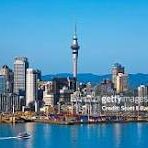The term “biggest sea” can refer to different measures of size, including surface area and volume. Here are key details about some of the largest seas in the world:
Philippine Sea
- Surface Area: Approximately 5 million square kilometers (1.9 million square miles).
- Location: Situated in the western Pacific Ocean, east of the Philippines, bounded by Japan to the north, Taiwan to the west, and the Mariana Islands to the east.
- Features: Known for the Mariana Trench, the deepest part of the world’s oceans. It is also an area of significant biodiversity and strategic geopolitical importance.
Coral Sea
- Surface Area: About 4.8 million square kilometers (1.85 million square miles).
- Location: Off the northeastern coast of Australia, bounded by the Great Barrier Reef to the west, Vanuatu and New Caledonia to the east, and the Solomon Islands to the north.
- Features: Famous for the Great Barrier Reef, the world’s largest coral reef system. The Coral Sea is rich in marine life and is a popular area for diving and marine tourism.
Arabian Sea
- Surface Area: Approximately 3.9 million square kilometers (1.5 million square miles).
- Location: Bounded by India to the east, Oman and Yemen to the west, Pakistan and Iran to the north, and the Somali Sea and the Indian Ocean to the south.
- Features: A critical sea route for oil and gas transportation, linking the Middle East with the rest of the world. It has significant economic and geopolitical importance.
South China Sea
- Surface Area: About 3.5 million square kilometers (1.4 million square miles).
- Location: Bounded by China to the north, the Philippines to the east, Vietnam to the west, and Malaysia and Brunei to the south.
- Features: Contains numerous islands and reefs, including the Spratly and Paracel Islands, which are subject to territorial disputes. It is a major route for global maritime trade and has vast oil and gas reserves.
Caribbean Sea
- Surface Area: Approximately 2.7 million square kilometers (1.06 million square miles).
- Location: Bounded by the Yucatán Peninsula, Central America, and the northern coast of South America to the west and south, and the islands of the Greater and Lesser Antilles to the north and east.
- Features: Known for its clear blue waters, vibrant coral reefs, and popular tourist destinations. It is an area of significant biodiversity and cultural diversity.
Mediterranean Sea
- Surface Area: About 2.5 million square kilometers (965,000 square miles).
- Location: Bordered by Southern Europe, North Africa, and the Eastern Mediterranean countries.
- Features: Historically significant as the cradle of Western civilization, with a rich history of trade, exploration, and cultural exchange. It has a unique marine ecosystem and is a major route for shipping and tourism.
These seas play crucial roles in global climate regulation, marine biodiversity, and human economic activities. Each has unique geographical features, ecosystems, and geopolitical significance.

